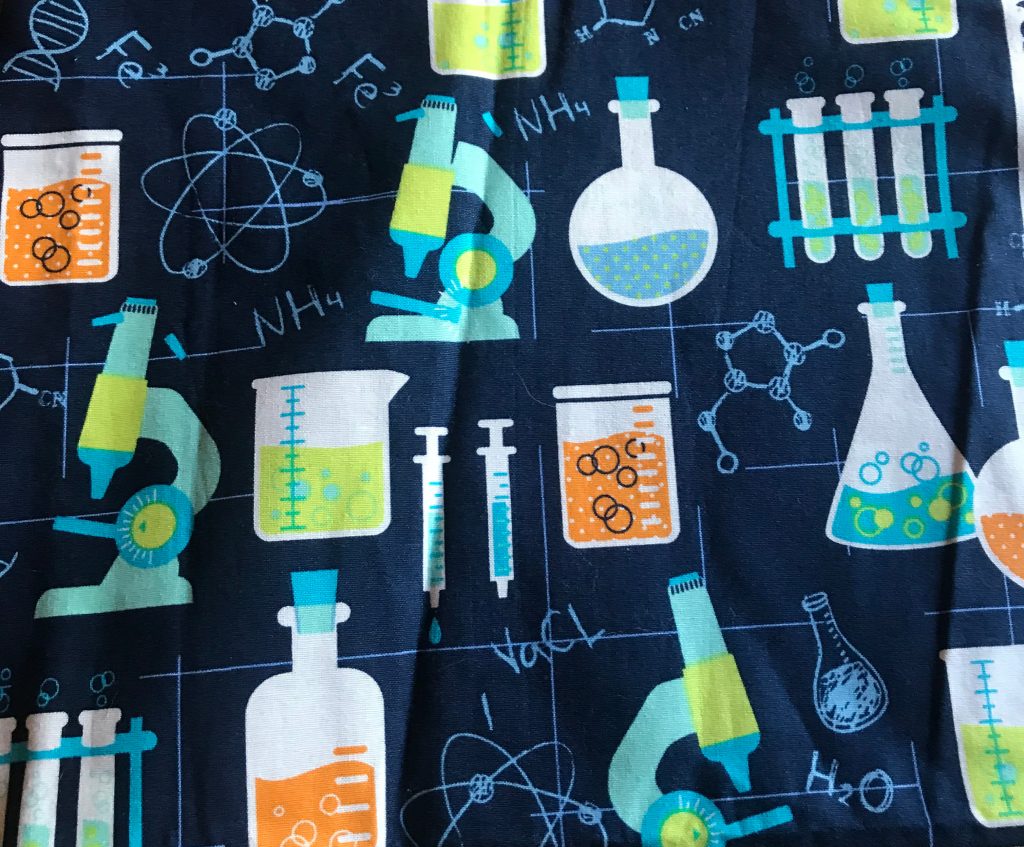General Notes:
- I am in no way endorsed by any of the companies or brands I talk about. This information comes from my own experience unless otherwise stated.
- When I refer to a “small fabric store” I’m likely referring to something like the fabric aisle of Walmart. A “large fabric store” is an actual fabric store chain, such as Jo-Ann Fabrics.
- Always read the actual instructions that come with your fabric in regards to washing and/or ironing. This advice is meant to be general.
- The price ranges are based off of the prices I’ve seen in a larger, chain fabric store (such as Jo-Ann’s). It may not be accurate to where you live. Fabric price can also vary greatly since there’s often many different types.
Cotton ~ The “Miss Congeniality” of Fabrics

What can it be used for?
Just about everything! Great for clothes, quilts, pillows, basically anything… Comes in a great variety of solid and printed options! I would argue it’s one of the most common fabrics there are.
Does it stretch?
Not really, unless it’s blended with another type of fabric that is.
Does it fray or pill?
It indeed frays, but it’s not as more or as easily as some.
General price range
Usually you could find cotton for relatively cheap. Solid fabrics tend to go for around $5-$10/yd, whereas printed may be a little more pricey.
How accessible is it?
This is one of the easiest fabrics to find. Most fabric stores (and even some craft stores) keep it in abundance due to its versatility.
How difficult is it to work with?
Cotton is so easy to work with! It’s great for beginners since it can be hand sewed or machine sewed very easily. It’s generally pretty thin which helps if you’re making something that involves a lot of layers.
Washing & Ironing Tips
Part of the reason cotton is great for clothing is because it’s really easy to wash. As for ironing, it usually requires a hotter setting. Stubborn wrinkles may require steam or starch. Fabrics with intense prints or add-ons like glitter should be ironed on the “wrong” side to prevent damage.
Polyester ~ A Synthetic Wonder

What can it be used for?
Polyester is a manmade fabric that’s basically plastic. Due to this, it tends to be water resistant and is great for clothing! Sometimes this makes fabric a little itchy and uncomfortable, which is why we often see polyester in a blend of some kind (ex. Some shirts are a 75% cotton, 15% polyester blend). “Poly Fill” – fluffy stuffing for stuffed animals, pillows, etc is also made out of this!
Does it stretch?
It can be stretchy, especially if blended with something else. Overall it’s pretty good at keeping its shape though!
Does it fray or pill?
It does fray. How much so depends on the blend.
General price range
This really depends, since polyester is so often seen in blended forms. However, it’s usually pretty cheap (under $10/yd).
How accessible is it?
Polyester is usually pretty accessible! I usually notice of polyester/cotton blends specifically.
How difficult is it to work with?
Generally very easy! It’s usually not a very thick fabric which makes it easy to sew by hand or on a machine.
Washing & Ironing Tips
Polyester doesn’t really wrinkle so ideally it shouldn’t need to be ironed! If necessary, either dampen the fabric first, or steam the fabric instead. The plastic within it may not appreciate the heat, so read the instructions and be careful. Washing it isn’t too hard either. It dries quickly and overall doesn’t shrink that much. Again, this can depend on the blend.
Coming soon… Part 2: Soft Fabrics

